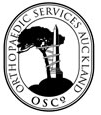Patellofemoral (Kneecap) Pain
Pain from the kneecap/thighbone (patellofemoral) joint is one of the most common problems affecting the knee. The two main causes are:
- Due to wear of the joint surfaces
- Idiopathic (indeterminable cause)
Idiopathic patellofemoral pain is produced by mechanical load on pressure-sensitive bone which lies beneath the joint surface (subchrondral bone). Why this supporting bone becomes sensitive, producing pain when it is loaded (such as on stairs, kneeling or sitting) is not known. There does not seem to be any link to developing future deterioration/wear in thepatellofemoral joint surfaces following development of pain.
So, the comforting thing about this problem is that is not serious but may take quite some time to resolve. The time course is unpredictable but may be several months. Continuing to exercise in the face of kneecap pain will not damage the knee, but it is best to avoid such activities that particularly aggravate pain. Treatment for this condition is unsatisfactory in that it often doesnt work. The problem is that the pain is mechanical- in other words is only there when the kneecap is loaded up. However it is important to keep the quadricep (quads) muscles- which attach to and drive thekneecap-in good shape by regular stretching and strengthening exercises. Sometimes, a course of skin taping (done by a physiotherapist) may be helpful, as may use of a neoprene knee-wrap with a patellar cut-out. Anti-inflammatory medication is usually ineffective in this condition but use of paracetamol after exercise may help.
There is no effective surgical treatment for idiopathic (cause unknown) patellofemoral pain . Operations of various sorts have been tried in the past but it is now clear that they do not work. It is, unfortunately a matter of waiting until the pain goes away. However, if the pain is severe and disabling, an orthopaedic surgeon should run someinvestigationsto be sure that the condition truly ispatellofemoral pain alone.
A recently recognised entity is excessive lateral pressure syndrome or ELPS. Due to excessive lateral (outward) pull of the quadricep muscles attaching to the kneecap, the outer border of thekneecap comes under excess pressure, producing pain. If this condition is thought to be the cause of the kneecap pain, surgical treatment by patellar realignment is effective.
Another common initiating cause of kneecap pain is a direct knock to the kneecap- this can cause the kneecap to become load-sensitive for weeks or even months. Why pain can persist following a blow to the kneecap is not known but may be due to bone bruising within the kneecap bone substance.
The other main cause of patellofemoral pain is due to deterioration or wear in the kneecap joint surfaces, and this will show up on the MR scan. Patients with simple patellofemoral pain do not all need MR scans. Should wear in the joint surfaces be the problem, surgical treatment may be needed. Depending on the degree, extent and location of the wear, it may be possible to smooth it off using a scope in the knee and a power shaver or radiofrequency probe, or the patella may need to be realigned in its track (patellar realignment), resurfaced (patellofemoral joint replacement), or removed (patellectomy).
